Selecting the best hiking equipment for beginners will greatly improve your outdoor experience. Knowing the basics will make all the difference whether you hike or start. This guide will help you negotiate the essential items for a safe and fun trip, from picking the correct backpack and tent to the suitable sleeping bag and clothes. We will also review basic accessories such as cooking tools, water-purifying devices, and headlamps. Knowing this will help you to make wise choices for your next outdoor trip.
How to Choose the Right Equipment for Hiking and Camping?
An essential camping gear checklist must be chosen wisely to guarantee a safe and fun experience in the great outdoors. The appropriate gear can make all the difference in comfort, ease, and general enjoyment of your excursion. Let’s help you with what to look for when choosing basic gear for hiking and camping, including clothes, shoes, backpacks, tents, sleeping bags, and cooking tools.
Understanding Your Hiking and Camping Needs
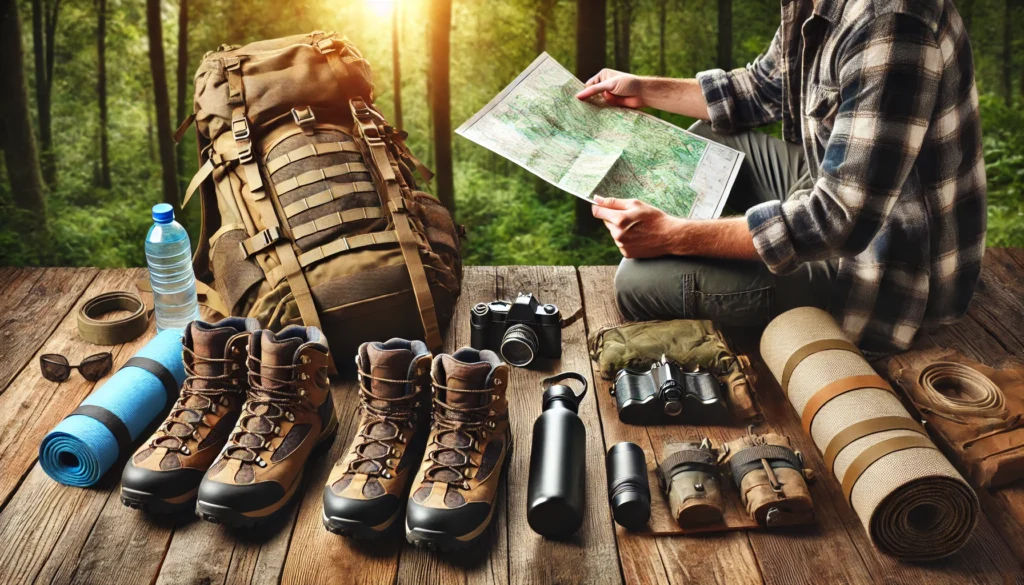
Before you begin kit buying, you must know the kind of hiking and camping experience you seek. Think about the length of your trip—day hike, weekend excursion, or week-long adventure. The weight and kind of equipment you need depends depend on the distance you travel. Your other clothing and footwear choice will also depend on the terrain you traverse—rocky, mountainous, or level. Knowing these elements will enable you to choose the lightweight hiking gear for your particular demand.
Key Equipment for Hiking
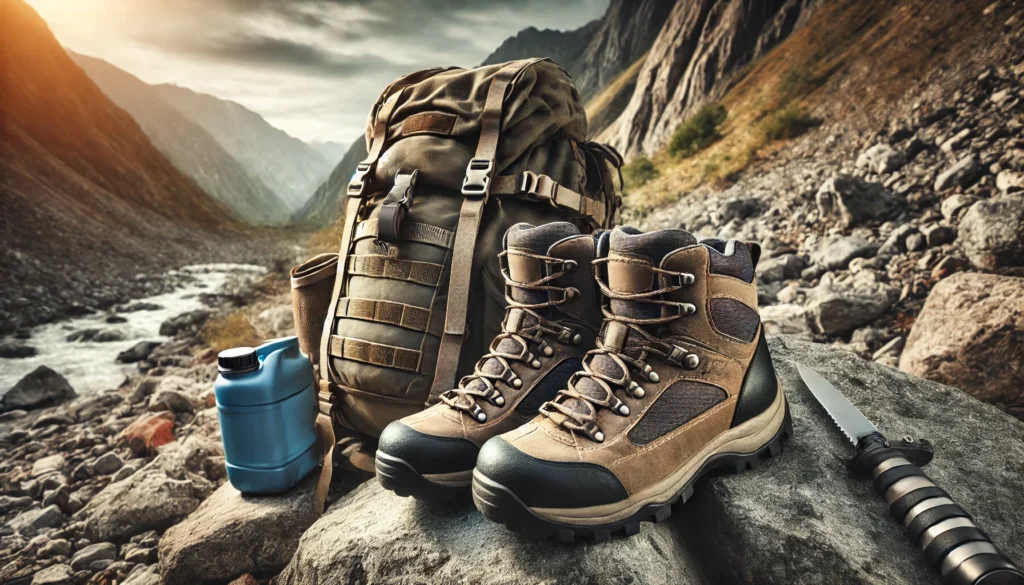
- Footwear: Your shoes are the most important item you will need. Selecting the correct shoes or boots might help avoid blisters and injuries. To help you make an informed decision, consider reading expert reviews from Outdoor Gear Lab on hiking boots. Boots fit for hard terrain and large weights and offer ankle support. For shorter walks or more straightforward paths, lighter and more flexible shoes are perfect. Another factor is waterproofing; choose boots if you hike in damp surroundings. Avoiding blisters and discomfort depends on a fit. Walkabout to find comfort after trying hiking boots with the socks you want to use on trails.
- Clothing: Hiking’s best approach for controlling temperature and moisture is layered dressing. Maintaining body warmth and avoiding chafing depend on a good base layer of moisture-wicking textiles, keeping sweat away from your skin. Retaining body heat in colder settings depends critically on a warm mid-layer, such as a fleece or down jacket. To guard against chilly winds and rain, pick a waterproof, windproof jacket for the outer layer. Comfort depends also on lightweight, fast-drying hiking pants. For tips on additional personal care essentials that will keep you comfortable outdoors, don’t forget to check out our Top Haircare Products Guide.
- Backpack: Your backpack should fit everything you need for the climb without trouble. The length of your trip determines the backpack’s capacity. A 20–30 liter pack will be plenty for a day trip; for an overnight climb, search for packs of around 50 liters. Choose packs roughly between 60 and 80 litres for multi-day excursions. If you need additional backpacks and other essential gear for your outdoor adventures, take a look at our Must-Have Fitness Gear.
Key Equipment for Camping
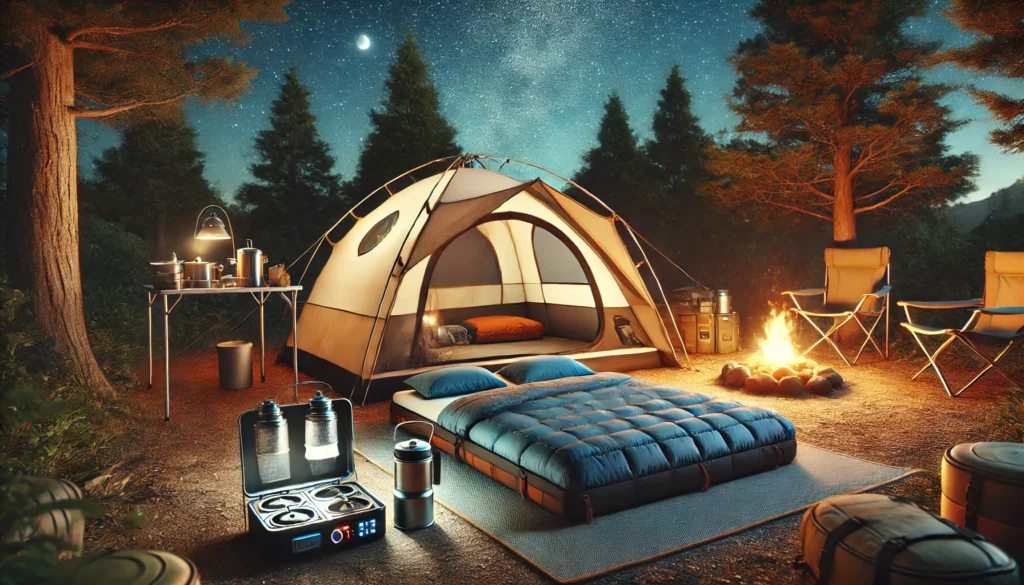
- Tent: The number of people, the weather, and the simplicity of setup all affect the tent one chooses for camping. While tunnel tents have more interior areas but need pegs for stability, freestanding tents are flexible and simple to set up. Although most circumstances call for three-season tents, harsh winter conditions could make them unsuitable. Check if the tent offers enough room for your equipment and yourself. In warm and humid surroundings, ventilation is crucial to stop condensation within the tent. You can also explore related outdoor setups, including tents and furniture for small patios, for additional camping ideas in our Outdoor Furniture Ideas for Small Patios blog.
- Sleeping Bag: Good outdoor sleep depends on a decent sleeping bag. Select a sleeping bag depending on the lowest temperature you project. Ratings for sleeping bags span summer (20–30°F/-6 to -1°C) to winter (-20°F/-29°C). While lightweight and compressible, down insulation loses insulating power when wet. More reasonably priced and better when wet is synthetic insulation.
- Sleeping Pad: Sleeping pads cushion for comfort and insulate from the chilly ground. Though heavy, closed-cell foam pads are reasonably priced and durable. Though they need a pump and care not to puncture, inflatable sleeping pads are more comfortable. Comfort depends on thickness; thicker pads are better insulators but weigh more.
Choosing Accessories
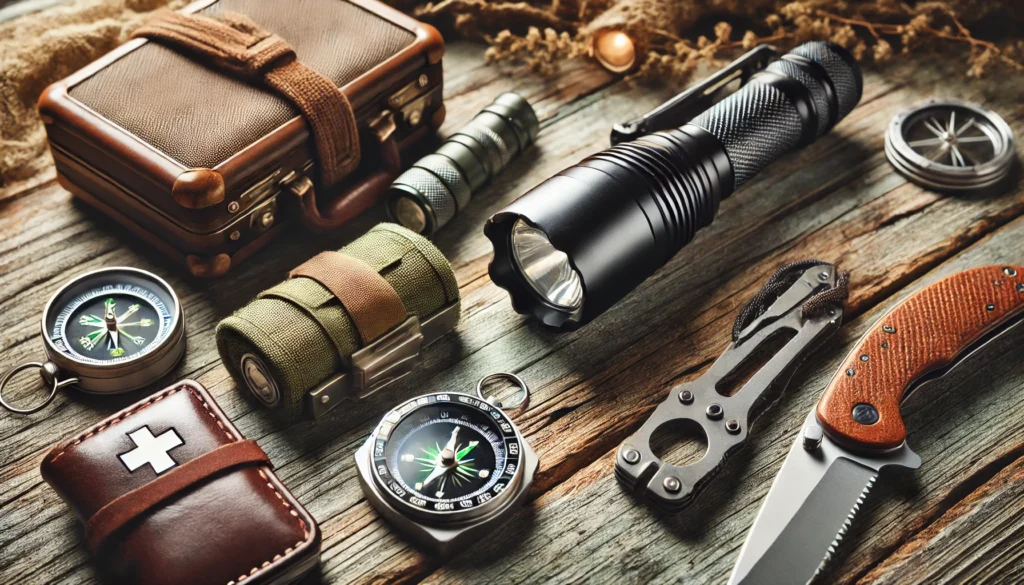
Accessories improve your camping and hiking experience. Affordable camping equipment for night-time walks and camp setup past dark is a headlamp or flashlight. Select one for hands-free operation with a head strap and extended battery life. For navigation purposes, choose map and compass. Another great tool is a GPS gadget, although without batteries, it can be erratic.
Bandages, antiseptic wipes, blister treatment, painkillers, and other personal meds should form a basic set. For short fixes, include a compact repair kit with duct tape, a multi-tool, and additional gear repair patches. Pack gloves, a cap, and extra socks for cold weather.
Testing Your Gear
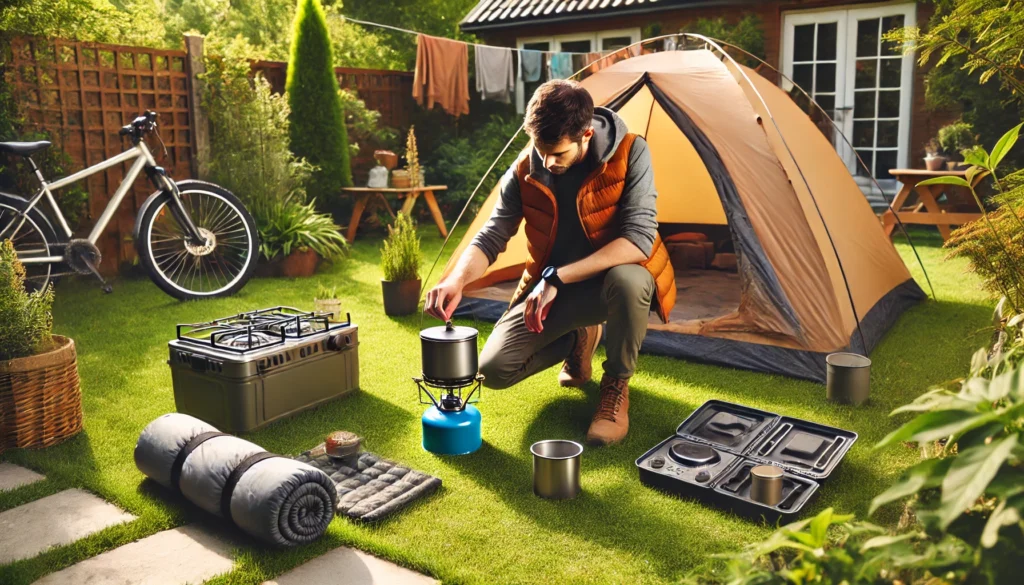
Try your gear before leaving. Try stuffing your rucksack, sleeping in your tent, and cooking on your stove. Make any required changes to improve the comfort and usefulness of your gear. Knowing your outdoor gear for camping and hiking will increase your confidence and help you to enjoy the travel.
Final Tips
- To reduce your effect on the environment, pack out all of your garbage and follow guidelines on waste disposal and campfires.
- Map your course. Know the trail conditions, study the map, and create an emergency plan.
- Review forecasts for the weather. Rapid changes in the temperature mean that you should be ready for many possibilities.
- Acquire fundamental outdoor skills. Your comfort and safety will improve if you know how to set up a tent, use a compass, and safely build a fire.
Selecting appropriate camping equipment for all seasons requires awareness of your needs and the surroundings. Investing in excellent gear, understanding how to use it, and honing fundamental outdoor skills will help you be ready for your next trip into the great outdoors. Good camping and hiking!
As you prepare for your hiking or camping trip, it’s important to keep sustainability in mind. Remember to pack out all of your trash and follow guidelines for waste disposal. For more tips on how to minimize your environmental impact, visit the Leave No Trace Center for Outdoor Ethics, where you’ll find practical advice on responsible camping and hiking.
Versa Goods Distributors: Your Premier Camping Wholesale Partner
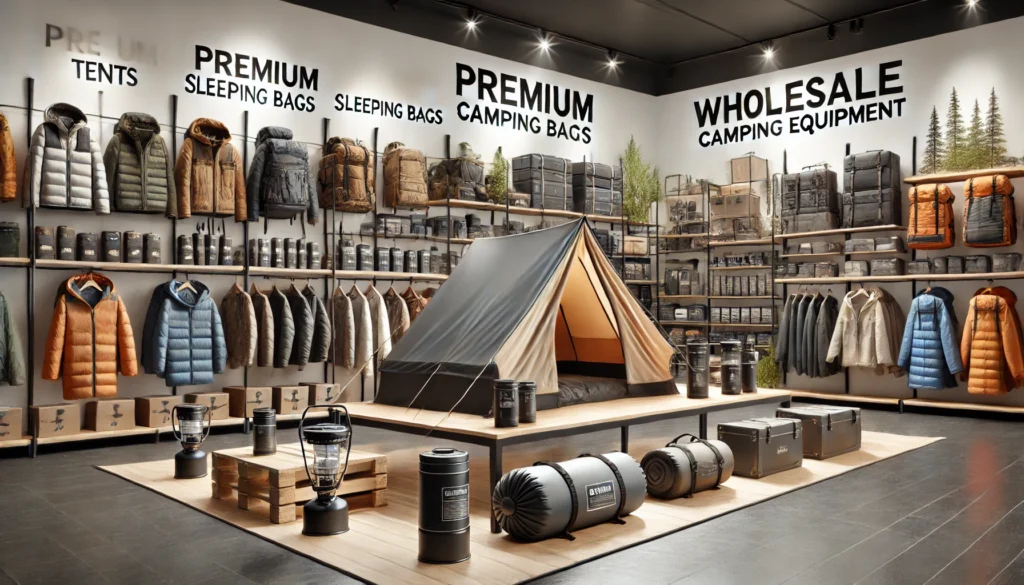
At Versa Goods Distributors, we specialize in providing high-quality camping gear at competitive wholesale prices. Whether you’re outfitting a large retail store, outfitting an outdoor adventure company, or stocking up for a camping event, we as camping wholesale distributors offer a diverse range of products. Our top products are tents, sleeping bags, camping stoves, and more. Get your favorite items right now!
Conclusion
With the best backpacking gear for hiking trips, your camping and trekking experiences will be more pleasant and comfortable. There are eighty words in all. Investing in high-quality goods that fit your demands and the surroundings will help you to guarantee great travel. Recall knowing your equipment is just as vital as selecting it. Using the advice in this book will help you to approach the vast outdoors with assurance and fully appreciate the beauties of nature.
FAQs
What kind of hiking backpack should I go for?
Select a backpack depending on the gear you need to carry and the length of your walk. A 20 to 30-liter pack will be plenty for shorter day trips; multi-day hikes could call for 50 litres or more.
How to choose a decent tent?
Think about things like weight, size, and climate. While lightweight, single-wall tents are ideal for camping, freestanding tents are flexible for various terrains.
What characteristics of a sleeping bag should I be looking for?
Based on your environment, the bag’s temperature rating, and its weight, choose an insulating type—down or synthetic. Comfort is everything; hence, before deciding on anything, try several possibilities.
Which clothes are ideal for camping?
You really must layer. Start with moisture-wicking base layers, add insulating mid-layers, and conclude with a waterproof and windproof upper layer. This method maintains your comfort and flexibility in changing surroundings.





